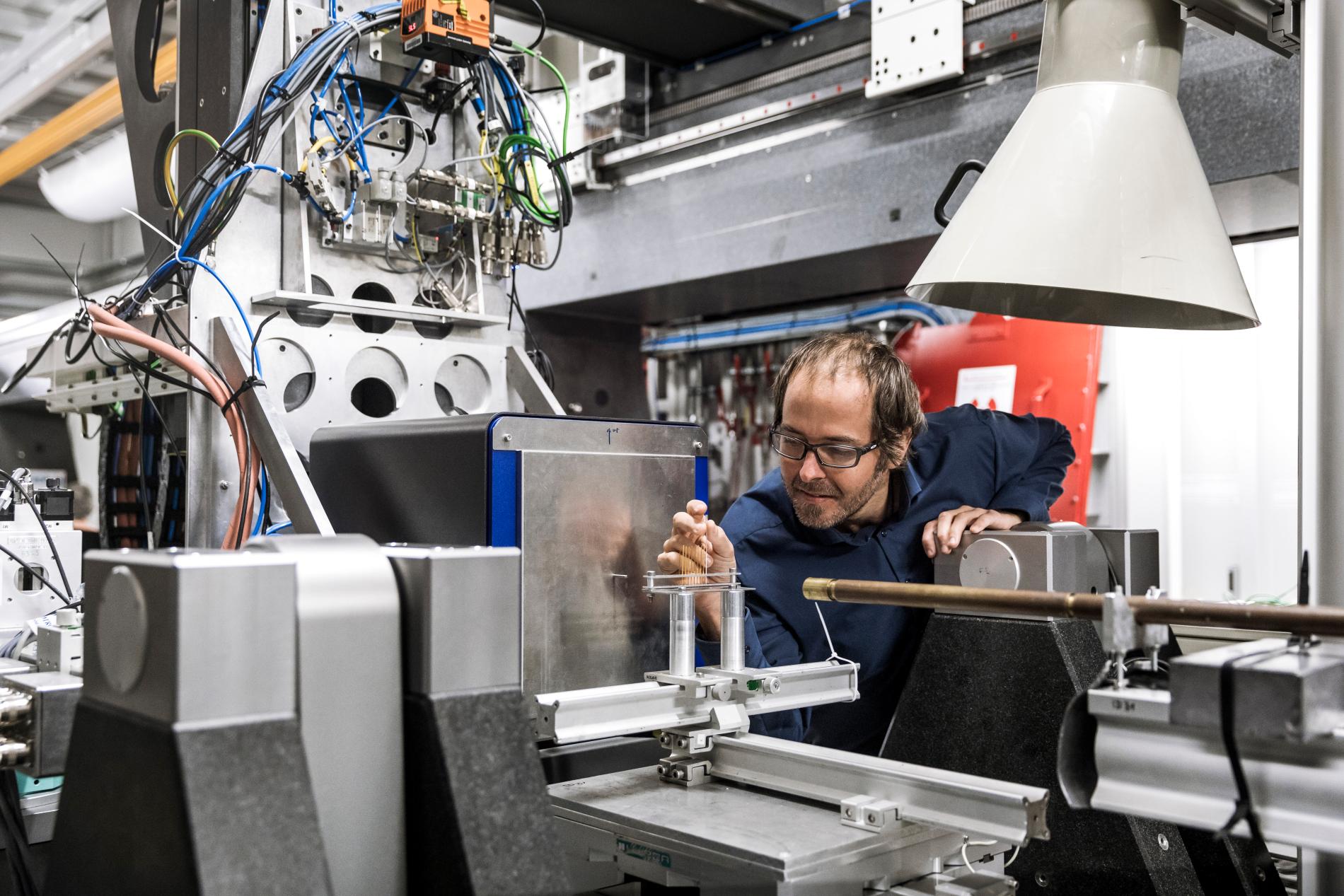- Home
- News
- General News
- New insights into...
New insights into a device that converts CO2 into useful chemicals
16-02-2023
Scientists led by the Denmark Technical University and the ESRF decipher the mechanism of a device that converts carbon dioxide into useful chemicals and fuels. The results are published in the journal Joule.
Share
CO2 electrolysis (CO2E) is a promising technology that uses electricity to convert carbon dioxide (CO2) and water (H2O) into useful chemicals such as carbon monoxide, ethanol, ethylene or synthetic fuels. The heart of the electrolyzer device, the membrane electrode assembly (MEA), includes the membrane, the catalyst layers, and gas diffusion layers. It is a method to convert CO2, a greenhouse gas, into useful chemicals and fuels using electricity.
As the technology is transitioning from ‘beaker-type’, fundamental research into more applied and engineering oriented research, there are many issues and bottlenecks in this transition. “MEA based CO2 electrolysis are promising candidates towards a sustainable future, but they often have stability and performance issues, as the gas diffusion electrode (GDE) can get flooded and form salt deposits. Before we could solve this, we first needed to understand what was happening exactly”, explains Sahil Garg, post-doctoral researcher at the Technical University of Denmark and one of the first authors of the publication.
The scientific community was aware that there was an issue with salt formation and it was affecting the performance of the device. However, scientists did not know how it happened.
 |
|
Jakub Drnec, scientist at the ESRF, on beamline ID31, where the experiment took place. Credits: S. Candé. |
The team came to beamline ID31 at the ESRF to monitor water and bicarbonate formation in the GDE while the device was functioning, thanks to X-ray diffraction analysis. At the same time, they used in-line gas chromatography to link the changes taking place in the device to the formed products. “This is an example of a very creative and unusual way of using ID31: You need a high-energy probe to penetrate the cell, which mimics the commercial device’s performance, and track all the components of the cell”, explains Jakub Drnec, scientist at the ID31 beamline. “You can only do this kind of experiments in high-energy beamlines like ours”, he adds.
For the first experiments of this kind, a chaotic oscillating pattern was seen as the cell was decaying, and this actually became the key to understanding what was happening within the device.
The team found proof that when certain salts form in the cathode GDE, these cause water to collect and flood the cathode and the chemical reaction producing hydrogen increases (hydrogen evolution reaction or HER). The researchers also observed that the increase in HER is related to a drop in total cell potential and a shift in ion transport through the membrane, causing a chemical imbalance and oscillations.
 |
|
Sahil Garg and Asger Moss (right) discuss the design of the cell used on the ID31 experiments. Credits: S. Garg. |
“We discovered that it is actually the salt formation that exacerbates the electrolyte flooding, causing a shift in CO2 reduction reaction (CO2RR) selectivity towards HER”, says Asger Moss, scientist at the Technical University of Denmark and the other first author of the publication. The researchers also found out that the efficiency of the process increases and the energy needed to run the process decreases in the same oscillatory manner. This provides them with some answers to the long-standing questions about the design and optimization of next generation of CO2 conversion devices: “I believe these findings will help us to build efficient and environmentally friendly technologies for CO2 circular economy, much needed step for sustainable future”, says Drnec.
In the next step, the team will focus on mitigating the effects of salt deposition in GDE and the role of different electrolytes in improving electrolyzer stability and performance.
Reference:
Moss, A.B., et al, Joule, Vol. 7Issue 2p350–365Published in issue: February 15, 2023. https://doi.org/10.1016/j.joule.2023.01.013
Text by Montserrat Capellas Espuny
Top image: Operando X-ray scattering reveals a direct observation of salt precipitation and electrolyte flooding in the copper gas diffusion electrode (GDE). The observed oscillations in selectivity and cell potentials are initiated by salts blocking the GDE pores and thus limiting the CO2 accessibility at the catalyst layer and worsening electrolyte flooding temporarily.



